Unique Blades Runner
Custom Handmade Damascus Steel Medieval Longsword with Black Leather Sheath
Custom Handmade Damascus Steel Medieval Longsword with Black Leather Sheath
Couldn't load pickup availability
Personalization Info
Personalization Info
🎨 Make Your Blade Truly Unique
We offer custom engraving on many of our handmade knives, swords, and daggers. Whether it’s a name, initials, logo, or symbol — we use a high-precision 50W fiber laser to mark your item with sharp, lasting detail.
✨ How to Personalize Your Order:
- 📧 Send your engraving details to uniquebladesrunner@gmail.com
- 🖋️ Include text or artwork (initials, name, or small graphic)
- ✅ We’ll confirm if engraving is available for your chosen product
🕒 Please note: Personalized items may take extra processing time and are not eligible for return.
Have questions? Feel free to reach out before placing your order — we’re happy to help!
Custom Orders
Custom Orders
🛠️ Custom Orders Welcome
Looking for something unique? We offer fully custom-made knives, swords, and collectibles designed to your exact preferences. Whether it’s for display, gifting, or your personal collection — we’re here to bring your idea to life.
✨ Custom Options Include:
- Blade length and style
- Handle material (wood, bone, stag, etc.)
- Steel type (Damascus, high carbon, D2, 1095, 5160, 80CrV2, stainless, or custom on request)
- Engraving or decorative finishes
📩 Reach out at uniquebladesrunner@gmail.com with your design idea or reference image. We’ll reply with availability, pricing, and estimated delivery time.
Care Instructions
Care Instructions
Your handmade blade deserves proper care to last a lifetime. Follow these tips to preserve its beauty and performance:
🔪 General Care:
- Keep the blade clean and dry after use
- Apply a thin coat of oil (mineral, camellia, or gun oil) regularly
- Avoid prolonged exposure to water or moisture
🔥 Damascus & High Carbon Steel:
- These steels are not stainless — they require extra care
- Store in a cool, dry place with low humidity
- Wipe with an oiled cloth before storing
🧊 Stainless Steel Blades:
- More resistant to rust, but still benefit from proper care
- Clean with a soft cloth and mild soap — dry immediately
- Light oiling helps preserve the finish and smoothness
Never place your blade in a dishwasher or soak it in water. Proper care ensures long-term durability and appearance.
Shipping Information
Shipping Information
🚚 Shipping Information
We ship worldwide with reliable tracking and protective packaging to ensure your blade arrives safely.
📦 Processing Time:
- Standard items: Ships in 4–7 business days
- Custom orders: Varies based on design complexity
✈️ Estimated Delivery:
- Domestic: 5–7 business days
- International: 10–20+ days (depending on customs)
🌍 Customs & Duties:
- International buyers are responsible for any applicable import taxes or customs fees
You’ll receive tracking info once your order is shipped. Have questions about shipping times? Email us anytime.
Disclaimer
Disclaimer
All our blades are individually handcrafted — no two items are exactly alike. Slight variations in grain, polish, or dimensions are part of the artistry.
- Our products are intended for collectors, chefs, and outdoor users
- Not designed for harm or misuse of any kind
- Must be used responsibly and in accordance with local laws
By purchasing, you acknowledge understanding and acceptance of our terms.
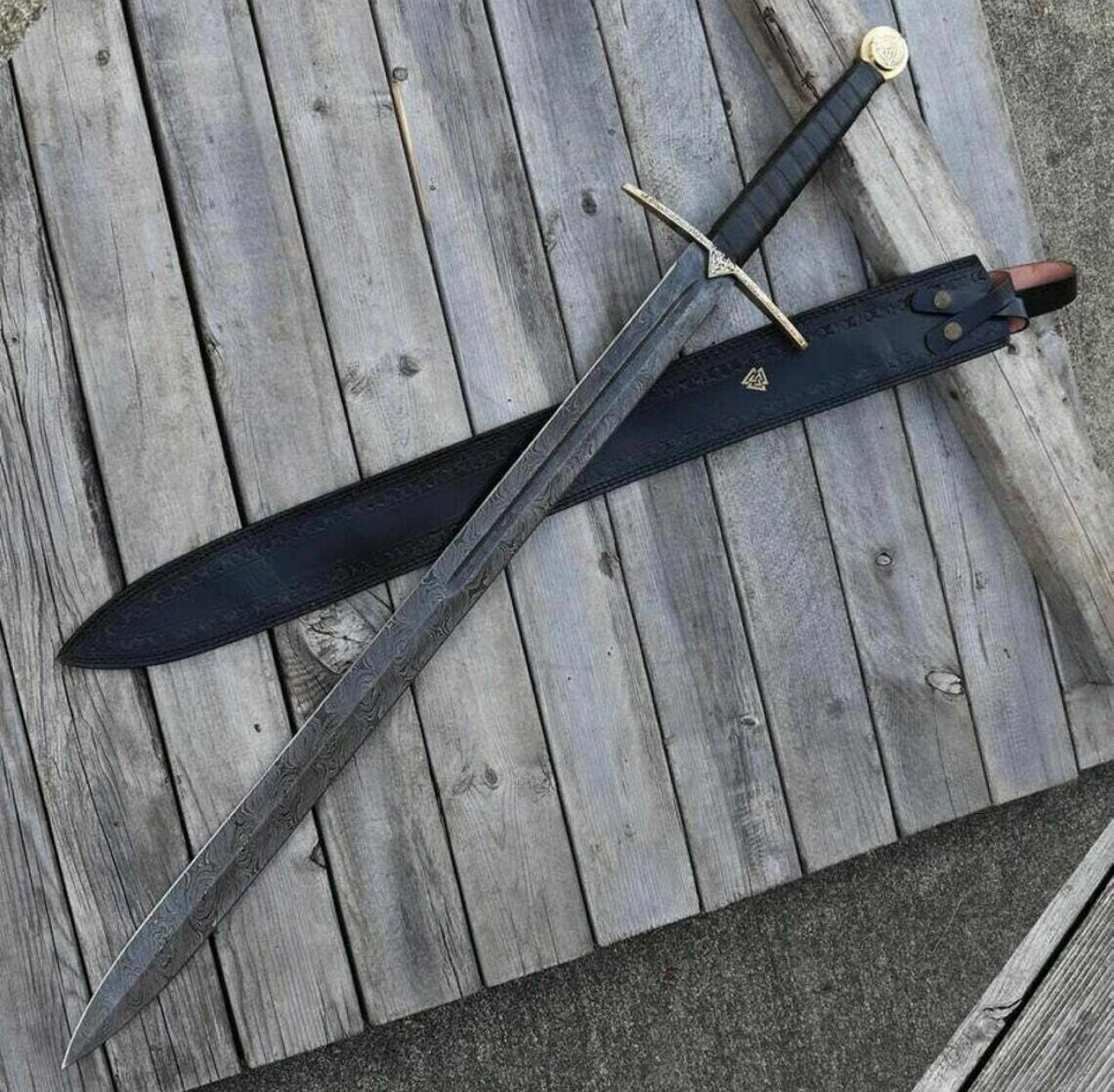
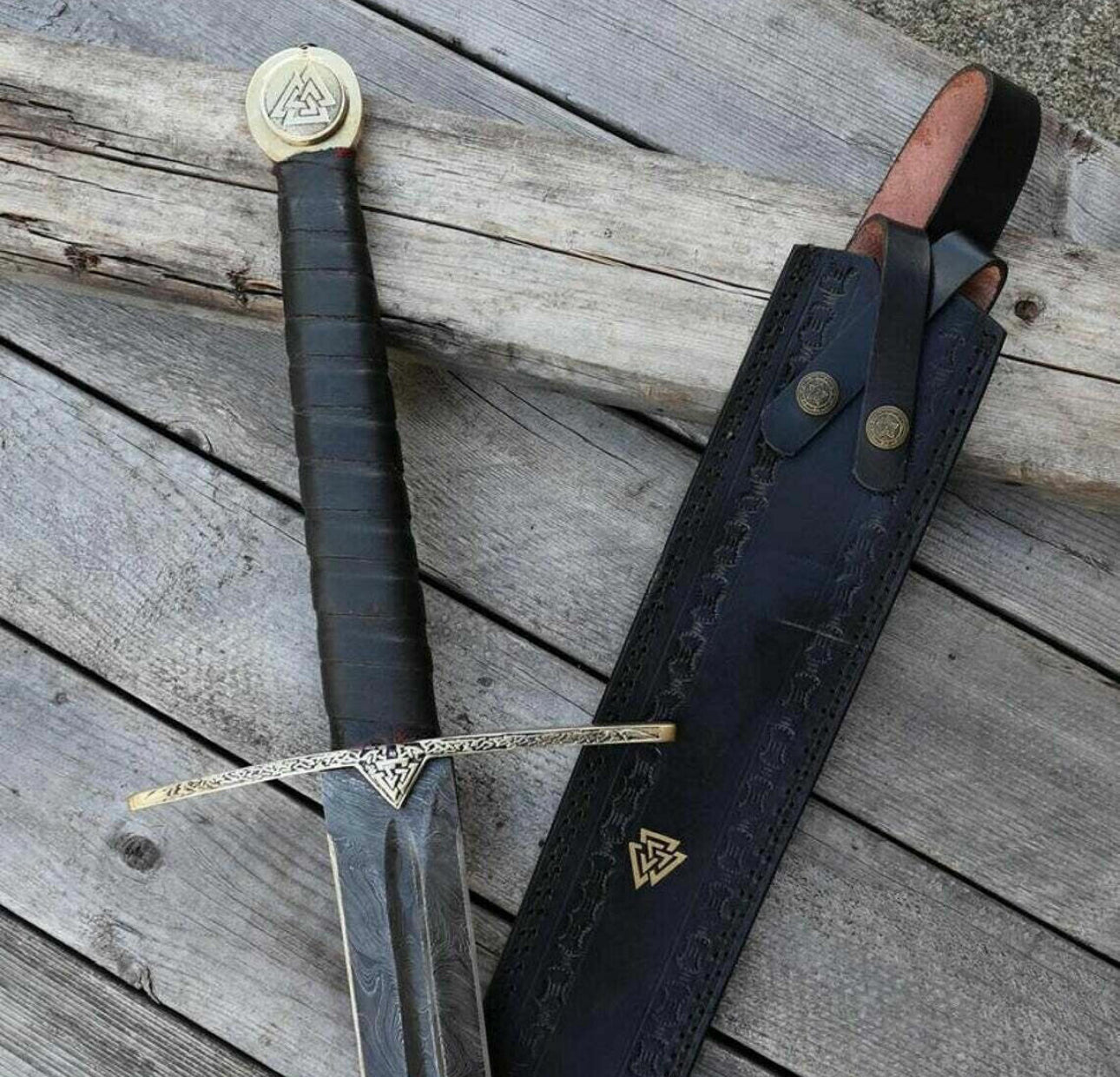
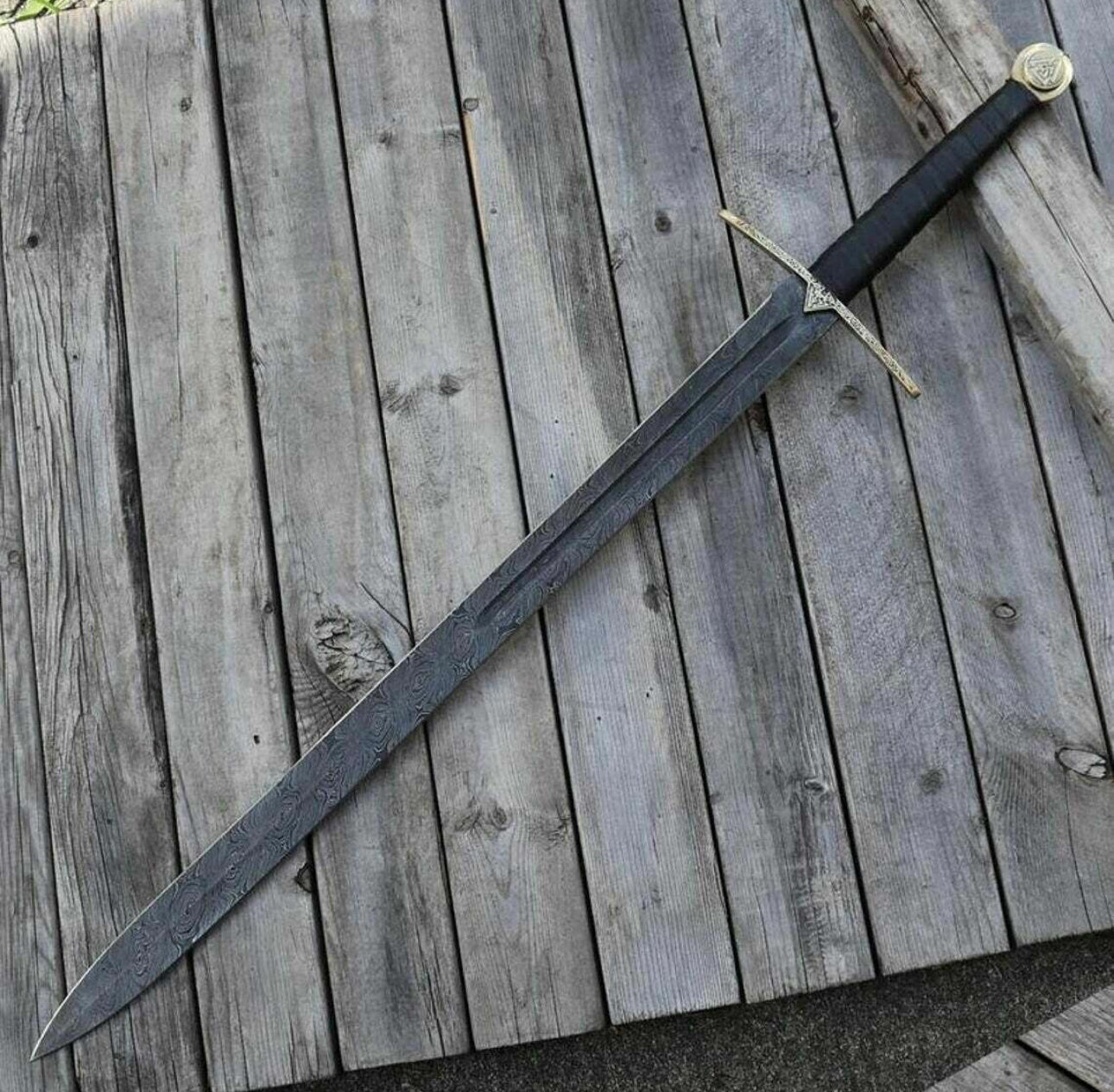
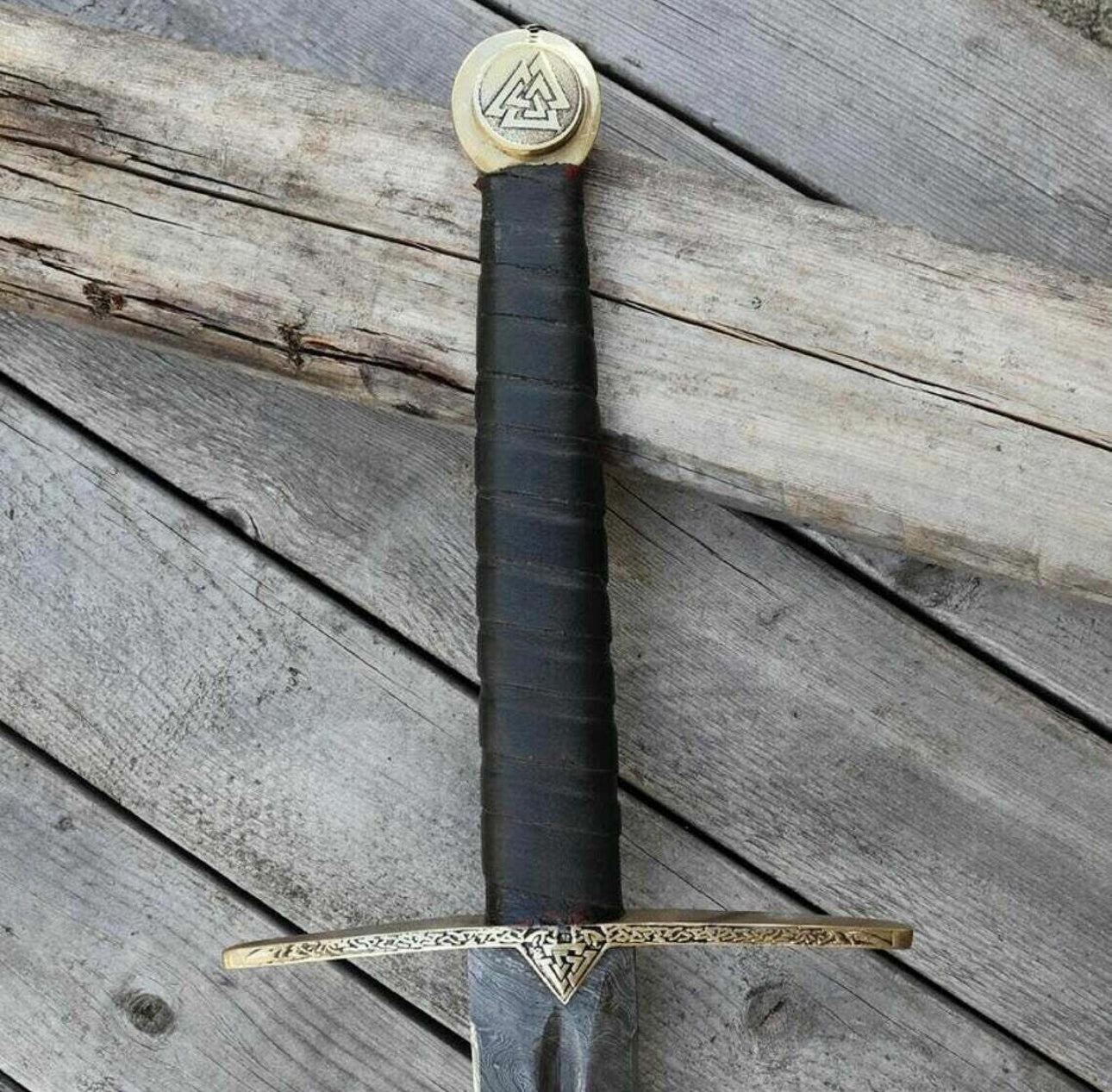
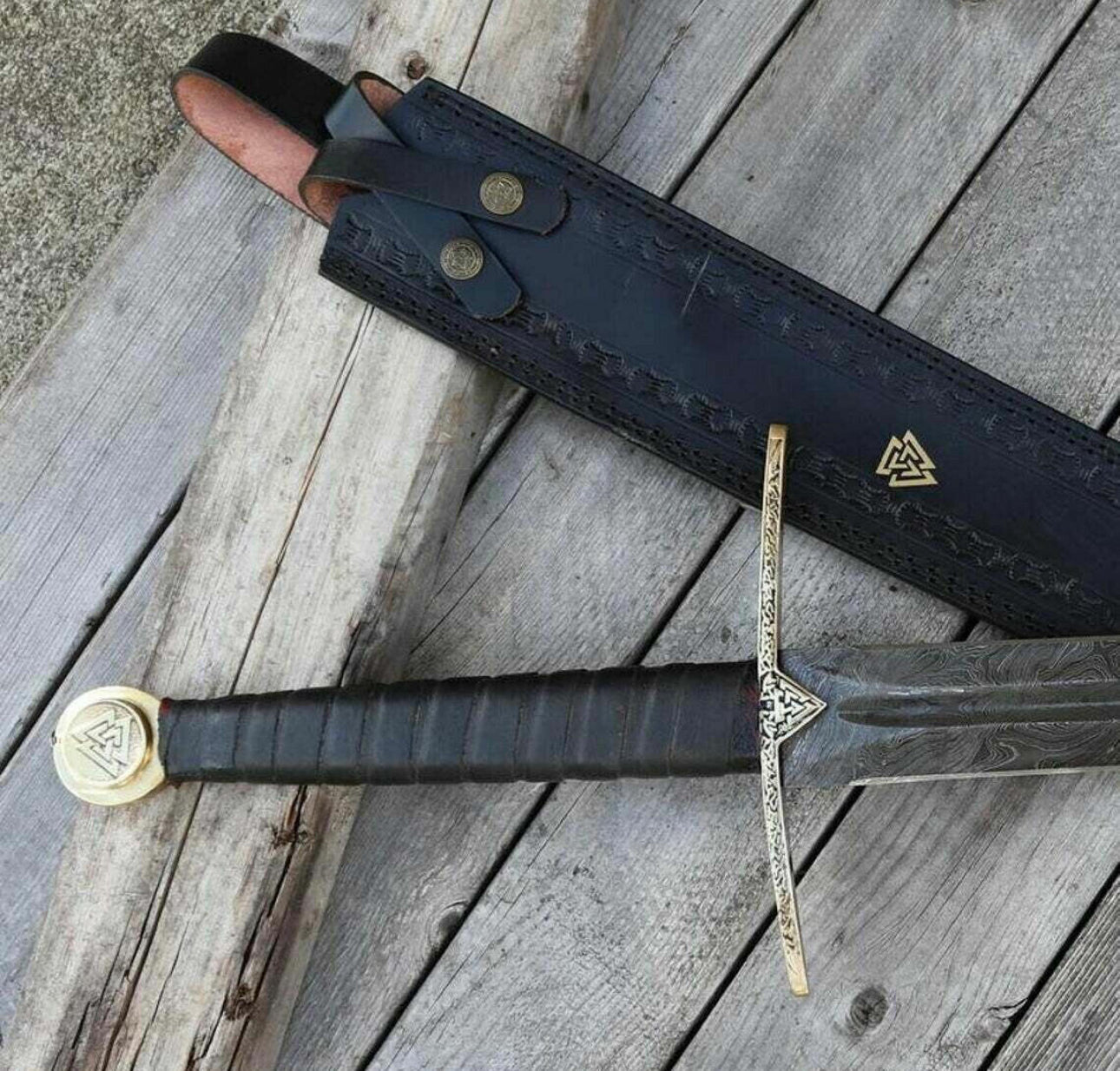
Medieval Longsword – A Timeless Collectible of European History
The Medieval Longsword is one of the most iconic symbols of the Middle Ages, often seen in historical records, legends, and countless pop culture adaptations. From the royal courts of Europe to the epic battlefields of medieval history, this blade has been celebrated for centuries for its remarkable craftsmanship, balanced design, and symbolic significance. Collectors, historians, and enthusiasts have long valued the Medieval Longsword for its elegance, versatility, and ability to capture the spirit of a bygone era.
In popular culture, the Medieval Longsword is a star in its own right. Whether wielded by legendary knights in historical dramas, carried by noble warriors in epic fantasy films like The Lord of the Rings, or featured in video games such as The Witcher and Skyrim, it embodies honor, skill, and heritage. Owning one is like holding a piece of living history — a handcrafted reminder of the artistry and traditions of medieval Europe.
A Collector’s Dream Piece
For any serious collector of historical blades, a finely made Medieval Longsword is more than just a decorative display. It represents centuries of evolution in metallurgy, design, and craftsmanship. The elongated double-edged blade, paired with a cruciform guard and a grip long enough for two hands, gave medieval knights unmatched control and precision. Modern artisans keep this tradition alive by hand-forging swords using premium steel, traditional tempering methods, and authentic design elements that honor the originals.
Historical Significance of the Medieval Longsword
The Medieval Longsword became popular in Europe from the late 13th to the early 17th century. It was favored by knights and noblemen for its reach, versatility, and balance. Historical fencing manuals, such as those by Johannes Liechtenauer, detail the elegant techniques associated with the Medieval Longsword — proving it was both a practical and refined blade. This connection to medieval chivalry and martial traditions makes it an irresistible piece for collectors and history lovers alike.
Craftsmanship That Stands the Test of Time
Modern reproductions of the Medieval Longsword are created with an obsessive attention to detail, ensuring every aspect reflects historical accuracy. Forged from high-quality carbon or Damascus steel, the blade undergoes careful heat treatment to ensure resilience and durability. The hilt is often crafted from materials like hardwood, wrapped in leather for a secure grip, and finished with a steel or brass pommel to maintain perfect balance.
Why Collectors Love the Medieval Longsword
A Owning a Medieval Longsword is a tangible connection to centuries of European history and craftsmanship, making it a centerpiece in any collection.
B The design is timeless, combining functionality with beauty, and appealing to fans of history, art, and medieval culture.
C It is versatile as both a display piece and a functional historical reproduction, perfect for reenactments, educational purposes, or showcasing in a curated collection.
Cultural and Pop Culture Presence
The Medieval Longsword’s presence in entertainment media has amplified its status as a cultural icon. In Game of Thrones, similar designs are seen in the swords carried by characters like Jon Snow and Brienne of Tarth. In video games, its detailed animations and realistic handling immerse players in historical combat simulations. In museums, authentic Medieval Longswords draw thousands of visitors, proving their enduring fascination.
Perfect for Display and Historical Reenactments
Collectors often place their Medieval Longsword in a wall-mounted display, on a sword stand, or within a themed medieval room. Some enthusiasts participate in reenactments or historical fencing, where these swords are appreciated not only for their beauty but also for their authentic handling. When made using historically accurate techniques, the Medieval Longsword becomes both a functional and decorative masterpiece.
Materials and Finishing Details
High-quality reproductions of the Medieval Longsword often use:
A Premium carbon steel or Damascus steel for the blade, providing both durability and a striking finish
B Hardwood or leather-wrapped grips for comfortable two-handed use
C Polished steel crossguards and pommels, often engraved or etched for a touch of personalization
The Medieval Longsword in Modern Collecting
For the modern collector, the Medieval Longsword holds the same allure it did for a knight centuries ago. Its elegant proportions, intricate craftsmanship, and deep historical roots make it an heirloom-worthy item. When selecting one for your collection, consider factors like blade material, balance, historical accuracy, and craftsmanship to ensure you’re getting a piece worthy of the Medieval Longsword name.
Investment in History and Art
Collectors know that historical replicas, when crafted with authenticity, can increase in value over time. The Medieval Longsword is not just a decorative piece; it is a work of art that reflects centuries of tradition. Many artisans today create limited-edition runs, making each sword even more exclusive and collectible.
Preserving the Legacy
Owning a Medieval Longsword comes with the responsibility of preserving its condition. Regular maintenance, such as oiling the blade and protecting it from moisture, ensures that your collectible remains in pristine shape for generations. By caring for your Medieval Longsword, you become part of the chain of custodians who have preserved this historical legacy for centuries.
Why the Medieval Longsword Stands Out
A It bridges the gap between art, history, and craftsmanship in a way few collectibles can.
B Its presence in movies, games, and historical reenactments makes it universally recognizable and appreciated.
C A well-crafted Medieval Longsword captures the romance and prestige of the medieval knightly tradition.
Conclusion
The Medieval Longsword is more than just a collectible — it’s a living testament to the artistry, history, and legends of medieval Europe. Whether you’re a historian, a pop culture enthusiast, or a dedicated collector, owning a Medieval Longsword means holding a tangible piece of the past. With its elegance, heritage, and cultural significance, it remains one of the most admired and sought-after collectibles in the world of historical arms and armor.
FAQ
Q: Is the Medieval Longsword historically accurate in design?
Yes, quality reproductions follow traditional dimensions, materials, and construction techniques from the medieval period.
Q: What materials are used in a Medieval Longsword?
Commonly, high-carbon or Damascus steel blades with hardwood or leather-wrapped grips, and polished steel crossguards.
Q: Can the Medieval Longsword be used for reenactments?
Yes, many collectors and reenactors use historically accurate reproductions for educational or performance purposes.
Q: How should I maintain my Medieval Longsword?
Regularly oil the blade, store it in a dry place, and avoid prolonged exposure to moisture or direct sunlight.
Q: Why is the Medieval Longsword so popular among collectors?
Its deep historical significance, elegant design, and cultural presence make it a must-have for serious collectors.





